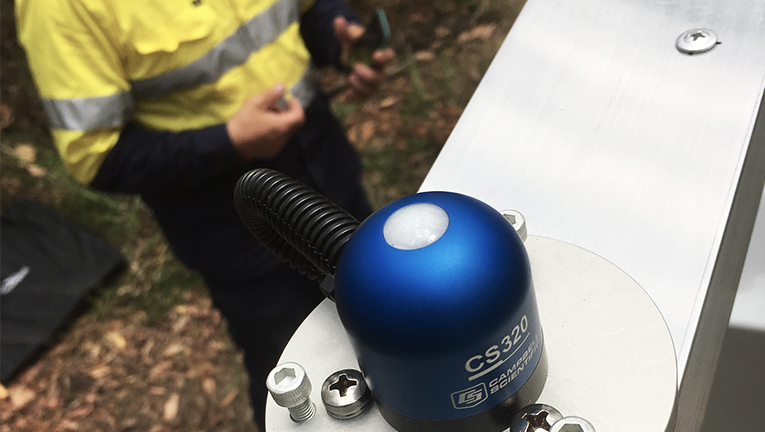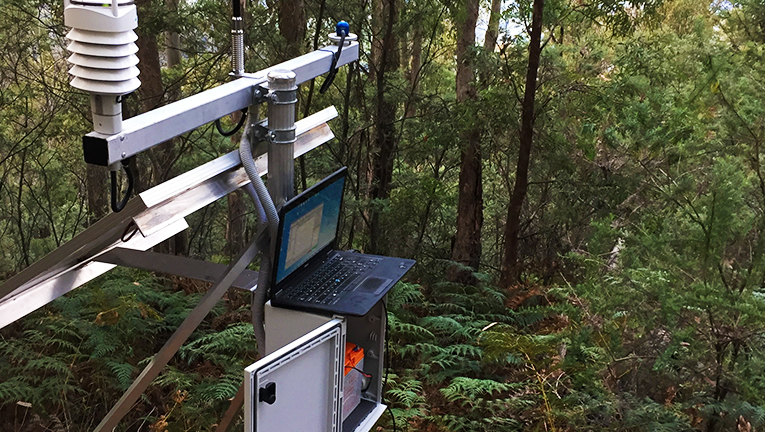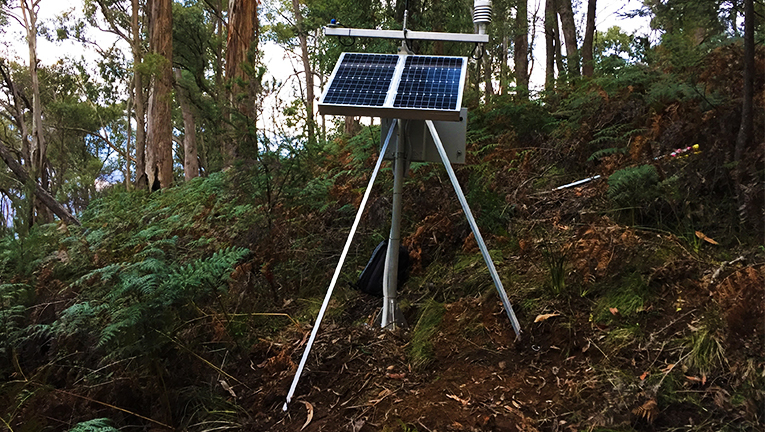
The design of an integrated monitoring solution for Forest Fire Management Victoria was one of the reasons Ventia was chosen to deliver monitoring stations across Victoria as part of the Automated Fuel Moisture Monitoring Program. Installed across the state of Victoria, the network provides a continuous overview of forest fuel moisture conditions.
The Forest Fire Management Victoria team includes staff from the Department of Environment, Land, Water and Planning (DELWP), Parks Victoria, VicForests and Melbourne Water. Its aim is to reduce the risk and impact of bushfires on Victoria's parks, forests and other public land.
Using innovative design, Ventia's Environmental Services team cleverly integrated existing, off-the-shelf technology to produce a proven, cost-effective monitoring station that measures moisture content of forest fire fuel loads as well as localised meteorological conditions.
The data captured through the project is used to provide a continuous overview of fuel moisture conditions in Victoria's parks, reserves and state forests, aiding decision making for planned burn activities and determining fuel potential during fire season.
The automated monitoring stations consist of sensors to measure wind speed and direction, air temperature, relative humidity, solar radiation, barometric pressure and rainfall. Associated ground-based sensors monitor fuel moisture (moisture content of combustible material), ground temperature and soil moisture using water content reflectometers.

Each monitoring station is powered by a solar system designed specifically for shaded conditions under tree canopies. The stations are constructed from lightweight materials and are easy to install. Ventia adopted a 'no concrete' design for mast footings so each of the permanent stations can be installed using hand tools and within a few hours.
Data is transmitted via 3G telemetry to a secure web portal. Ventia's solution provides a data averaging functionality and users can send SMS commands for instantaneous readings during high fire danger periods.
This information feeds into DELWP's 'Fireweb' system that combines data from a number of sources to inform the relevant agencies regarding fire risk and probability throughout the state. This information, in turn, can aid prediction, prevention and decision making around the threat of fire.
The result of this monitoring network is Forest Fire Management Victoria can access real time forest ambient conditions in high risk areas to make informed decisions that affect the safety of our community.
